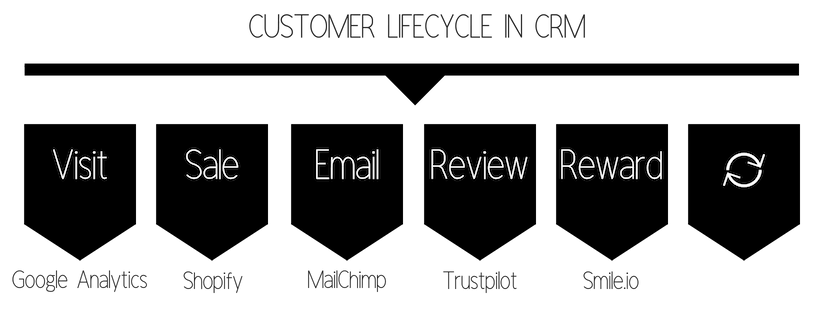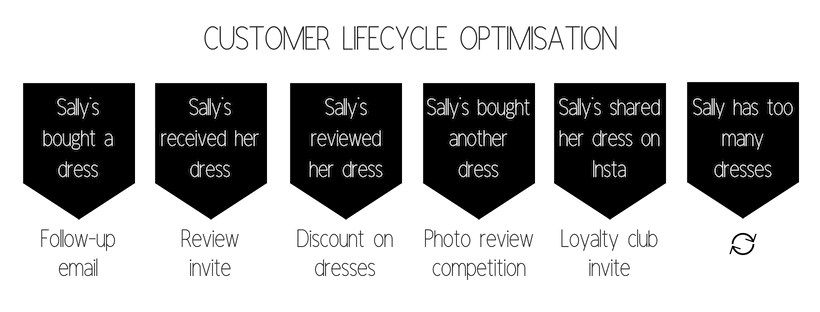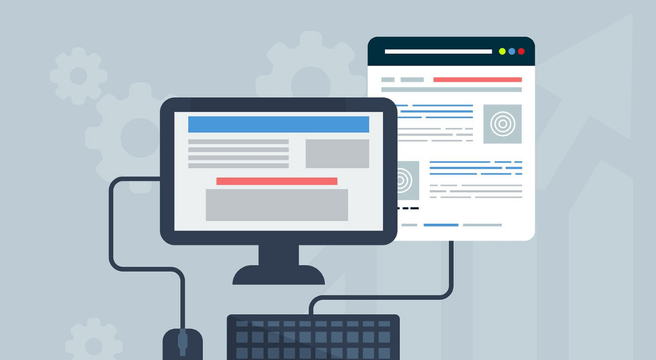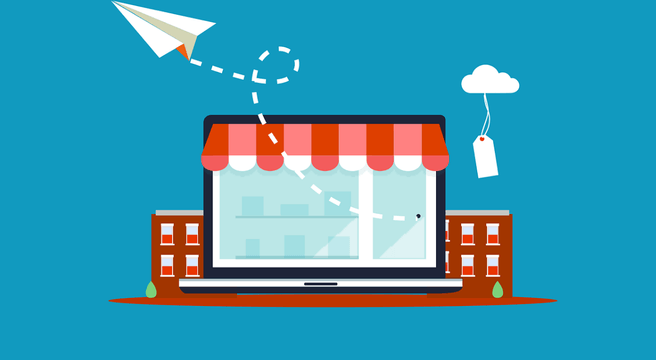For most businesses, the sale is the end game. Get that sale! We put all our energy and money into getting someone to buy, then we drop ’em.
Switching our view from ‘sale’ to ‘customer lifecycle’ takes us into the long game. By extending the period of attention we give each customer, we can find many more opportunities for cross-selling, generating content, repeat custom and brand advocacy.
How to optimise the customer lifecycle
Get a CRM
A Customer Relationship Management system (CRM) is like your Rolodex for customers. It hooks up to your website analytics and sales mechanism to track who’s who and what they’re doing. Their purchases, where they came from, contact details, marketing permissions, customer service contact, loyalty points… Everything!
Many, many other tools can integrate with a CRM; my very best thing right now is web chat bots that can use your CRM to give you all the customer information you need to provide amazing customer service.

Sounds expensive, right? But actually, most CRMs are a very affordable monthly fee and Hubspot, a market leader, is FREE. Why? How? Because they also provide paid services that link up with the CRM, like email.
However, you’re under no obligation to use any of these services, so if you’ve got the technical skills in-house to integrate Hubspot with your sales platform and analytics, you can manage your customers better for nothing.
Map your customer journeys
You can do this with or without a CRM but having that tool would allow you to use real-world examples. What you want to do is plan all the points at which a customer might have or could have contact with your business: the triggers. Plot what kind of contact and the goal.
Initial visit, sale, onboarding, review invitation, customer service query, loyalty reward, cross-sell, product support, seasonal offers… Once you’ve got marketing permissions, there’s no excuse not to extend a customer’s lifecycle far beyond the sale.







